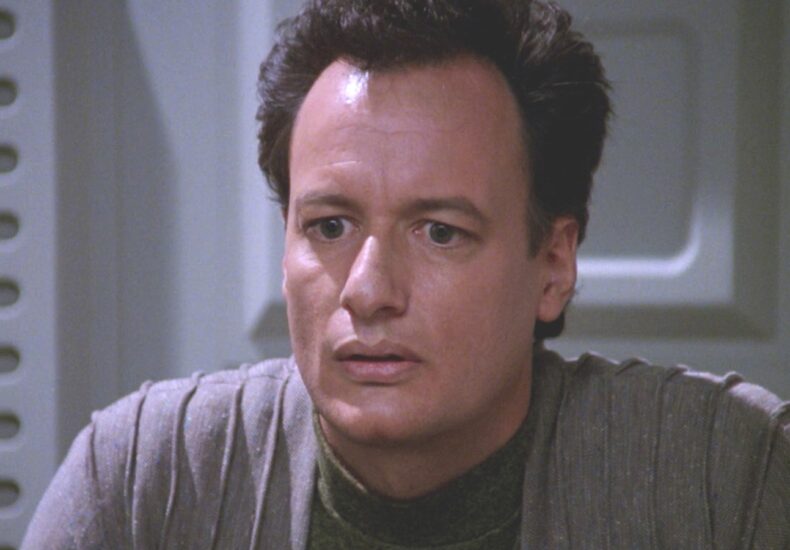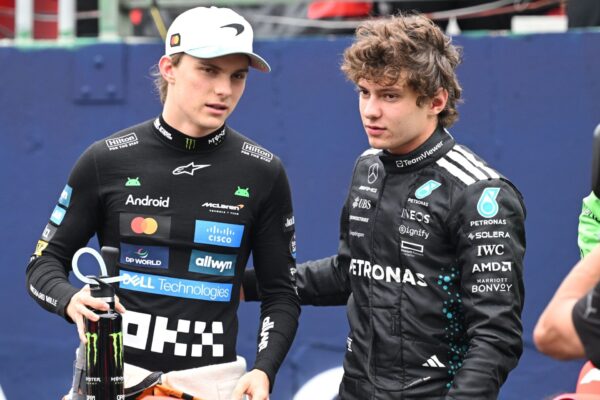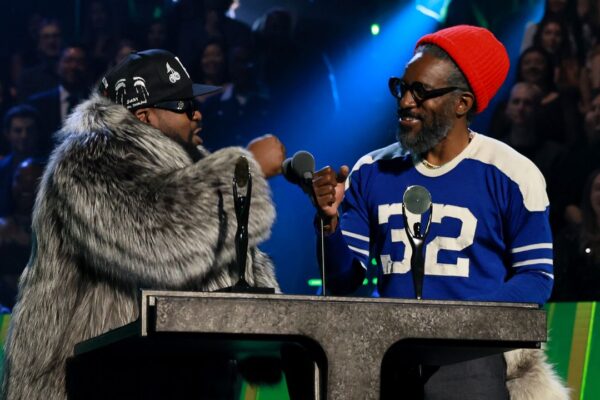
10 Iconic Star Trek Villains That Are Actually Overrated
From “Star Trek: The Original Series” to the recent introduction of Paramount Trek shows like *Star Trek: Discovery* and *Strange New Worlds*, the ever-expanding Trek franchise has no shortage of great—or at the very least, memorable—villains.
Some of the best villains in the Trek universe are conniving and duplicitous in nature, like Kai Winn (Louise Fletcher) or fan-favorite Gul Dukat (Marc Alaimo) from *Star Trek: Deep Space Nine*. Then there are the absolutely unhinged villains of the Trek cosmos, like the *Lower Decks* baddies Badgey (Jack McBrayer) and Peanut Hamper (Kether Donohue).
But for every *Star Trek* villain that hits hard, there are a dozen of the middling and “meh” variety. Think of the weird collector (Saul Rubinek) who kidnapped Data (Brent Spiner) in the *Star Trek: The Next Generation* episode “The Most Toys,” or the woman (Marta DuBois) who cosplays as the devil in another *TNG* episode, “Devil’s Due.” Not every antagonist can be as fierce as they want us to think they are.
With that in mind, here are ten of the most iconic Trek villains who put off more beet juice than blood wine energy.
—
### 1. Khan Noonien Singh
Khan is one of the meatier villain roles in the *Star Trek* universe, which makes it all the more frustrating that not even a Shakespearean actor like Benedict Cumberbatch could rekindle the magic.
Originally introduced in *The Original Series* episode “The Space Seed” (1967), Ricardo Montalbán’s portrayal of Khan became iconic, a status cemented by his sinister reprise 15 years later in *Star Trek II: The Wrath of Khan*. Khan is a genetically superior ruler expelled from Earth during the Eugenics Wars. Awakening from cryo-sleep, he takes over the Enterprise only to be abandoned on Ceti Alpha V.
Despite initial fears about sounding too much like Mr. Rourke after his stint on *Fantasy Island*, Montalbán delivered a passionate performance, fueled by Khan blaming Kirk for the death of his wife. Many fans consider Khan Trek’s top foe and Montalbán’s portrayal the finest of his career.
While Cumberbatch’s Khan in the Kelvin timeline film *Star Trek: Into Darkness* was objectively good, many fans felt it simply wasn’t the same villain as Montalbán’s Khan.
—
### 2. Shinzon
Tom Hardy was still at the beginning of his career when he took on the role of Shinzon, the disappointing Jean-Luc Picard clone in *Star Trek: Nemesis*. This film is typically rated by *TNG* fans as the worst in the film canon.
On its face, the concept feels like a long episode, were it not for two major life transitions bookending the film. The Romulans, up to their old shenanigans, troll humans with clones, abandon the Picard clone project, and leave Shinzon—a child— to slave mines.
Growing up to lead the Remans and terrorize the Romulans, Shinzon is mad at the world and wants to make Picard’s problem that he’s dying of a genetic blood disorder. But aside from his sleek Space Balenciaga look and Hardy’s intense portrayal, Shinzon felt gratuitous to many viewers. His bald head baffled fans, especially considering the hair shown on a young Picard in *TNG*. The clone concept added little to the story, and his vendetta seemed unconvincing.
—
### 3. The Suliban Cabal
The Suliban Cabal were the main antagonists early in *Star Trek: Enterprise*. After their home planet became uninhabitable, the Suliban people faced a power vacuum filled by the villainous Cabal—a faction genetically altered as payment for their role in the Temporal Cold War.
Their genetic modifications were freaky—bendy bones and chameleon-like flesh—making them unsettling, skeezy terrorists seeking constant artificial evolution upgrades. Being urged on by a mysterious voice from the future only added to their creepiness.
Sadly, they became less menacing as the series progressed and didn’t show up later in the Trek universe. *Enterprise* production illustrator John Eaves admitted their prominence faded quickly, leaving fans to wonder about their fate.
—
### 4. Q
Introduced as a villain in the first episode of *Star Trek: The Next Generation*, Q (John de Lancie) quickly became one of Trek’s most beloved antagonists.
A quasi-omnipotent extradimensional being from a race of similar powers, Q initially tested humanity but quickly became fixated on Picard.
Despite his mischievous potential, Q eventually shows a softer side, often aiding his human favorites as a benevolent trickster.
While fans enjoy his scene-stealing antics, by the middle of *Star Trek: Picard*, Q hardly qualifies as a villain. Instead, he serves as a deus ex machina for the complex time-travel narrative. One Reddit user lamented, “Dude was like the god mode cheat of story arcs. Super lazy way to round off any predicament.”
—
### 5. The Borg
The Borg, cybernetic organisms assimilating anyone deemed worthwhile, initially represented an existential threat: losing your identity and connection to loved ones.
However, *Star Trek* writers gradually squishified the Borg. The franchise introduced singing ex-Borg, Borg children, and a friendly Borg queen in *Star Trek: Picard* (Alison Pill).
Many fans believe what defanged the Borg was giving them a queen at all. Originally, the Borg operated mindlessly as a hive mind, making them terrifying in their relentless mission. The queen’s introduction made them more manageable and ultimately just another beatable foe.
—
### 6. Gary Mitchell
If you’re unfamiliar with *Star Trek: The Original Series*, you might not know Gary Mitchell (Gary Lockwood). But Mitchell is often regarded as one of the more frightening villains in TOS, partly due to his connection with Captain Kirk (William Shatner).
As the first villain in the Kirk era (production-wise, in “Where No Man Has Gone Before”), Lockwood’s unsettling performance was enhanced by eerie tinfoil scleral contact lenses and the chilling line, “Morals are for men, not gods.”
Initially a run-of-the-mill Starfleet officer, things go wrong when the ship crosses a barrier that supercharges Mitchell and Dr. Elizabeth Dehner (Sally Kellerman) with ESP abilities.
With telekinesis, telepathy, and high IQ, Mitchell turns out to be a dangerous, overpowered creep, demonstrating just how dire a poor personality combined with godlike powers can be.
—
### 7. The Crystalline Entity
Amidst a universe populated mostly by humanoids, encountering a giant space jellyfish-like entity is refreshing—and the Crystalline Entity stands out as such.
Data’s identical twin Lore (Brent Spiner) has been involved with this massive, broccoli-shaped space “snowflake” that preys on entire civilizations.
But for a predator capable of blocking out the sun, the entity behaves more like a dumb wild animal than a sentient villain. It needs Lore to locate its planet-sized snacks (*Datalore* and *Silicon Avatar*). Without him, it’s a bumbling cosmic beagle searching for crumbs.
Even in *Star Trek: Lower Decks* (“I, Excretus”), a second Crystalline Entity is found snacking on nebula radiation, suggesting it’s more opportunistic than predatory.
Perhaps a space wildlife reserve and feeding program would keep this nebulous beast satisfied—a crisis averted.
—
### 8. Lutan
No self-respecting Trek fan wants to revisit the *TNG* episode “Code of Honor” due to cringeworthy racial stereotyping and excessive use of lamé.
But beyond that, the villain Lutan (Jessie Lawrence Ferguson), leader of the Ligonians, is an underwhelming antagonist who causes Picard to fumble.
Bossy, arrogant, and obsessed with Tasha Yar, Lutan kidnaps the ship’s chief of security and holds a vaccine hostage.
Ultimately, he loses power when his wife Yareena’s temporary death dissolves their marriage contract, undermining his authority.
At the end of the day, he wasn’t a villain so much as a man acting according to his culture’s norms—the real failure was the diplomatic briefing neglecting to prepare for this.
—
### 9. The Bluegills
*Star Trek: The Next Generation* had its own version of reptilian conspiracy theories via the Bluegills, a parasitic race infiltrating Starfleet’s highest ranks.
These parasites enter hosts, burrow into their brains, and boost them hormonally into ‘roided-out meat suits, making them formidable.
However, their infiltration is laughably inept. Starfleet HQ buzzes with rumors, and their attempt to infect Riker aboard the Enterprise fails spectacularly.
They follow vampire-like rules: kill the queen parasite, and the rest die, a massive vulnerability that seems unrealistic for a secretive conspiracy.
—
### 10. The Kazon
If there’s one antagonist race that *Star Trek* fans universally find underwhelming, it’s the Kazon from *Star Trek: Voyager*.
They’re a cornier, big-haired knockoff of the Klingons—less impressive facial ridges, watered-down warrior ethos, and misogynistic, disorganized bickering.
They dominated the first two seasons of *Voyager*, but served mostly as a nuisance rather than a credible threat to Captain Janeway (Kate Mulgrew).
More like 19th-century street gangs than fierce warriors, the Kazon were toothless villains. As one fan aptly put it on The Trek BBS: “To call them cavemen is an insult to cavemen.”
—
The *Star Trek* franchise has delivered some of sci-fi’s most memorable and complex villains, but it’s clear not every foe manages to leave the same lasting impact. Whether conniving, unhinged, or just plain underwhelming, these ten villains highlight the highs—and lows—of the *Star Trek* villainy spectrum.
https://www.looper.com/2016973/iconic-star-trek-villains-actually-overrated/
You may be interested
Globe bets on prepaid fiber, sets expansion
No content was provided to convert. Please provide the text...
Bragging rights up as Samal makes 5150 debut
A stellar Open division field will be shooting for the...
DigiPlus launches P1-M surety bond program
MANILA, Philippines — DigiPlus Interactive Corp. has partnered with Philippine...



Leave a Reply